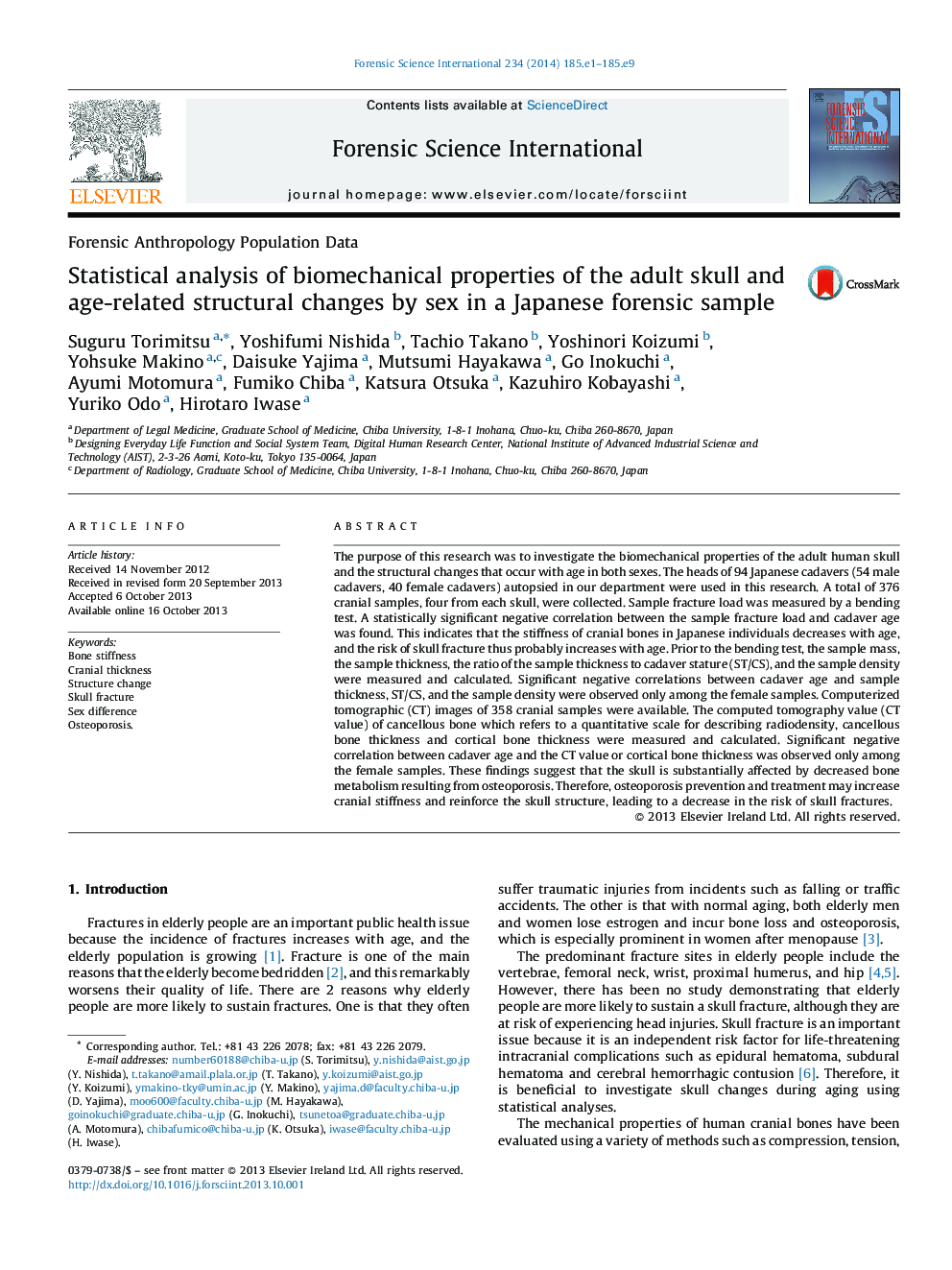| Article ID | Journal | Published Year | Pages | File Type |
|---|---|---|---|---|
| 6552652 | Forensic Science International | 2014 | 9 Pages |
Abstract
The purpose of this research was to investigate the biomechanical properties of the adult human skull and the structural changes that occur with age in both sexes. The heads of 94 Japanese cadavers (54 male cadavers, 40 female cadavers) autopsied in our department were used in this research. A total of 376 cranial samples, four from each skull, were collected. Sample fracture load was measured by a bending test. A statistically significant negative correlation between the sample fracture load and cadaver age was found. This indicates that the stiffness of cranial bones in Japanese individuals decreases with age, and the risk of skull fracture thus probably increases with age. Prior to the bending test, the sample mass, the sample thickness, the ratio of the sample thickness to cadaver stature (ST/CS), and the sample density were measured and calculated. Significant negative correlations between cadaver age and sample thickness, ST/CS, and the sample density were observed only among the female samples. Computerized tomographic (CT) images of 358 cranial samples were available. The computed tomography value (CT value) of cancellous bone which refers to a quantitative scale for describing radiodensity, cancellous bone thickness and cortical bone thickness were measured and calculated. Significant negative correlation between cadaver age and the CT value or cortical bone thickness was observed only among the female samples. These findings suggest that the skull is substantially affected by decreased bone metabolism resulting from osteoporosis. Therefore, osteoporosis prevention and treatment may increase cranial stiffness and reinforce the skull structure, leading to a decrease in the risk of skull fractures.
Related Topics
Physical Sciences and Engineering
Chemistry
Analytical Chemistry
Authors
Suguru Torimitsu, Yoshifumi Nishida, Tachio Takano, Yoshinori Koizumi, Yohsuke Makino, Daisuke Yajima, Mutsumi Hayakawa, Go Inokuchi, Ayumi Motomura, Fumiko Chiba, Katsura Otsuka, Kazuhiro Kobayashi, Yuriko Odo, Hirotaro Iwase,
